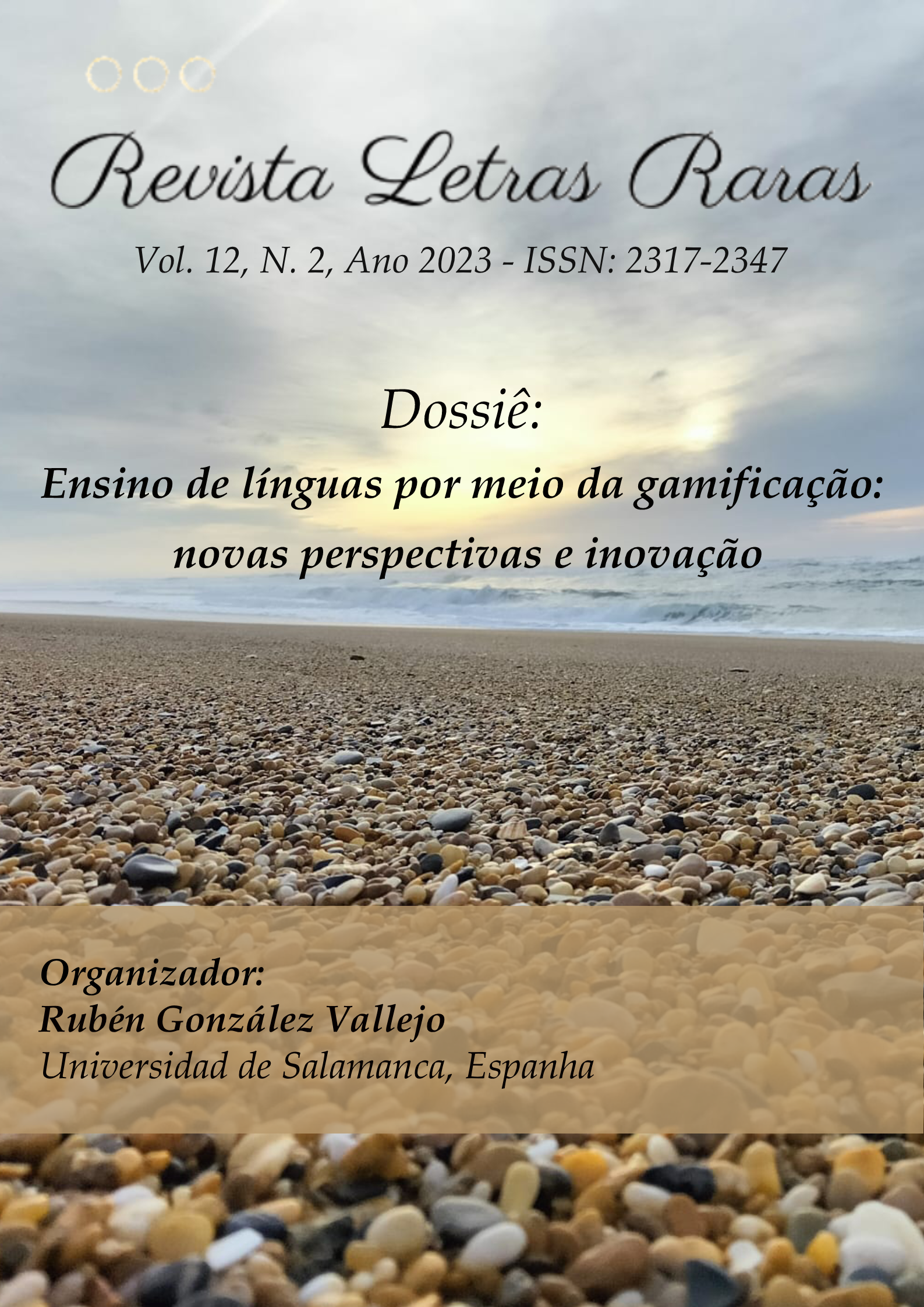From dwarf to dwarfism: the different representations in Snow White
DOI:
https://doi.org/10.5281/zenodo.8302744Palavras-chave:
Dwarfism, Disability studies, Snow White, Brothers Grimm, AdaptationsResumo
The purpose of this article is to critically analyze the evolution of the representation of dwarfs, from Romanticism to the present day. Firstly, the representations made in Grimm’s collection of fairy tales will be analyzed, and the terminology used to designate marvelous characters of short stature will be debated and their narrative function will be presented according to Vladimir Propp's theory. Then, the focus will be placed on the various reinterpretations of Snow White, the most remembered tale when it comes to the popular imagery of dwarfs. Disney's full-length movie and current adaptations, including movies and comics, will be debated, demonstrating that, although the focus of the analysis so far is Disney's patriarchal reading and how feminism has influenced its readaptations, these works also reflect the extent to which the representation of dwarfism (the disability and not only the marvelous creatures) has evolved - or how far we still have to go for it to become minimally acceptable. Despite being an article focused on the marvelous, it aims to be a contribution to disability studies regarding dwarfism.
Downloads
Referências
BRANCA de Neve e o Caçador. Direção de Rupert Sanders. Produção de Joe Roth, Sarah Bradshaw, Sam Mercer. Roteiro: Evan Daugherty, John Lee Hancock, Hossein Amini. Música: James Newton Howard. [S. L.]: Universal, 2012. (127 min.), cor.
BRANCA de Neve e os Sete Anões. Direção de David Hand. Produção de Walt Disney. Roteiro: Dorothy Ann Blank, Richard Creedon, Merrill de Maris, Ted Sears, Otto Englander, Earl Hurd, Dick Rickard, Webb Smith. Música: Frank Churchill, Paul Smith, Leigh Harline. [S. L.]: Walt Disney Productions, 1937. (83 min.), cor.
COLOMER, Teresa. Introdução à literatura infantil e juvenil atual. São Paulo: Global, 2017.
D'ALESSANDRO, Anthony. Disney Responds to Peter Dinklage ‘Snow White’ Comments, says it’s “Taking A Different Approach” to Adaptation. Deadline, 25/01/2022. Disponível em: https://deadline.com/2022/01/peter-dinklage-snow-white-disney-response-1234919571/ Acesso em: 01 mai.2022.
DORAN, Colleen; GAIMAN, Neil. Snow, Glass, Apples. S.L: Dark Horses Book, 2019.
ESPELHO, Espelho Meu. Direção de Tarsem Singh. Produção de Ryan Kavanaugh, Bernie Goldmann, Brett Ratner, Kevin Misher. Roteiro: Jason Keller, Melissa Wallack. Música: Alan Menken. [S. L.]: 20Th Century Fox Home Entertainment, 2012. (106 min.), cor.
FLORESTA Negra. Direção de Michael Cohn. Produção de Robert W. Cort. Roteiro: Thomas Szollosi. Música: John Ottman. [S. L], 1997. (100 min.), cor.
GAUNDENZI, Paula; ORTEGA, Francisco. Problematizando o conceito de deficiência a partir das noções de autonomia e normalidade. Ciências & Saúde Coletiva, 21 (10), p. 3061-2071, 2016.
GRIMM, Jacob e Wilhelm. Contos maravilhosos infantis e domésticos. Trad.: Christine Röhrig. São Paulo: Editora 34, 2018.
GUINSBURG, J. (org.) O Romantismo. São Paulo: Editora Perspectiva, 2002.
KIRKLAND, Justin. Peter Dinklage put Disney on Blast for its ‘Fucking Backwards’ Snow White Remake. Esquire, 26/01/2022. Disponível em https://www.esquire.com/entertainment/movies/a38895969/peter-dinklage-snow-white-seven-dwarfs-comments/ Acesso em: 24 mai.2023.
MEIRELLES, Cecília. Problemas da literatura infantil. Rio de Janeiro: Nova Fronteira, 1984.
MELLO, Anahi Guedes de. Deficiência, incapacidade e vulnerabilidade: do capacitismo ou a preeminência capacitista e biomédica do Comitê de Ética em Pesquisa da UFSC. Ciências & Saúde Coletiva, 21 (10), p. 3265-3276, 2016.
MORAES, Eliana Aparecida Gaiotto de; MARTINS, Maria Angélica Seabra R. Branca de Neve: O conto de fadas e a mídia. In: O Professor e a Leitura do Jornal, 5. Campinas: UNICAMP, 2010, p. 1-8. Disponível em: https://alb.org.br/arquivo-morto/portal/5seminario/PDFs_titulos/BRANCA_DE_NEVE_O_CONTO_DE_FADAS_E_A_MiDIA.pdf. Acesso em: 12 fev. 2022.
MOTA, Ilka de Oliveira; SILVA, Maria Norma Lopes Souza; ARAUJO, Joelma Alves. Branca de Neve e os Sete Anões: uma análise discursiva do filme de Walt Disney. Revista DisSoL – Discurso, Sociedade e Linguagem, ano 5, nº 9, p. 5-23, 2019.
NEUHAUS, Stefan. Märchen. Stuttgart, Tübingen, Basel: Editora A. Francke, 2005.
PROPP, Vladimir. As raízes históricas do conto maravilhoso. Trad.: Rosemary Costhek Abílio; Paulo Bezerra. São Paulo: Martins Fontes, 2002.
SANTOS, Adriana Cavalcanti dos; SILVA, José Nogueira da. Branca de Neve: Por que não) conta pra mim? Revista Brasileira de Alfabetização, São Paulo, v. 14, p. 200-215, 04 jul. 2021.
SILVA, Daira Renata Martins Botelho da. As várias Brancas: estudo sobre a representação e ressignificação da branca de neve. 2013. 37 f. TCC (Graduação) - Curso de Mídia, Informação e Cultura, Centro de Estudos Latino-Americanos Sobre Cultura e Comunicação, Universidade de São Paulo, São Paulo, 2013.
Downloads
Publicado
Como Citar
Edição
Seção
Licença
Copyright (c) 2023 Revista Letras Raras

Este trabalho está licenciado sob uma licença Creative Commons Attribution-NonCommercial 4.0 International License.







